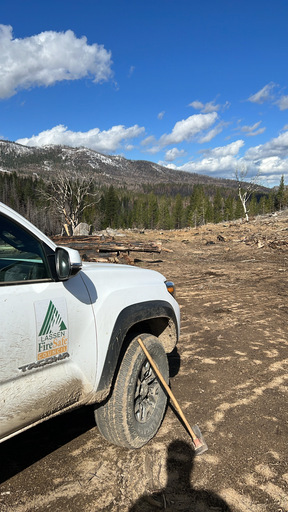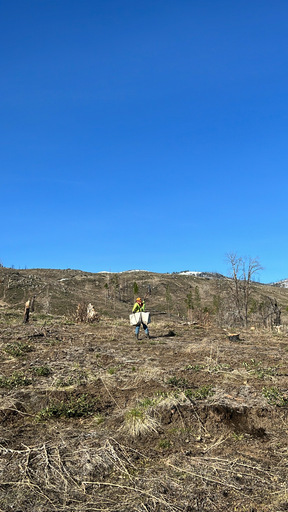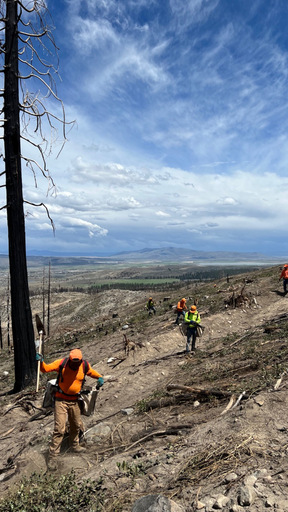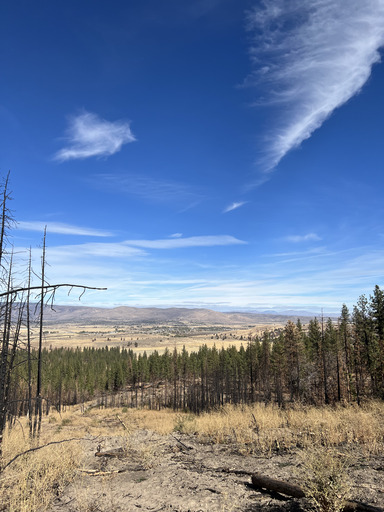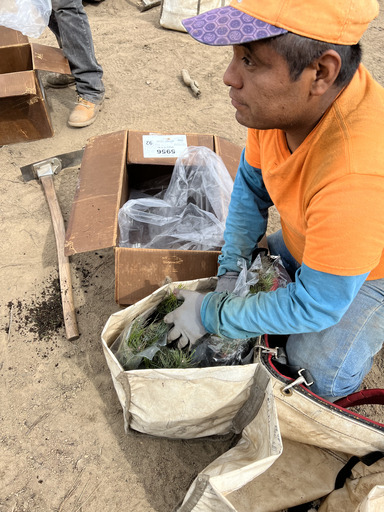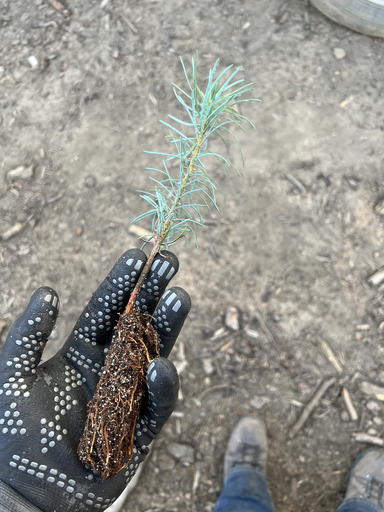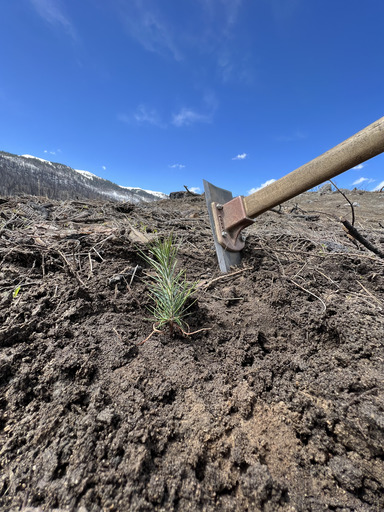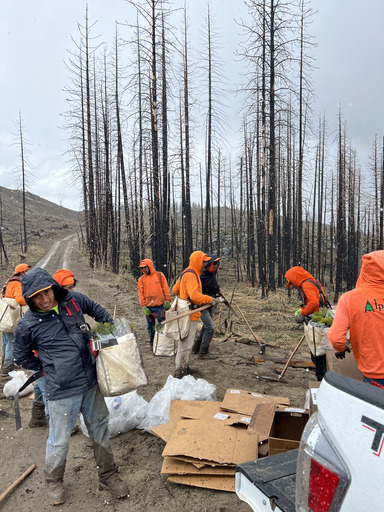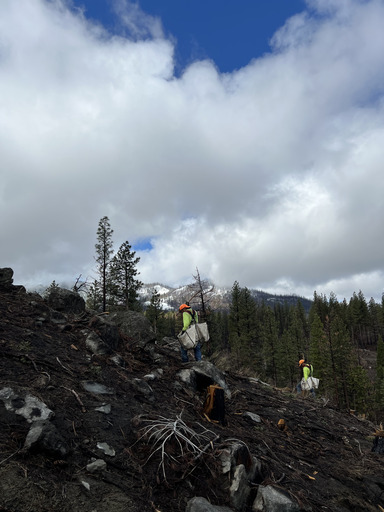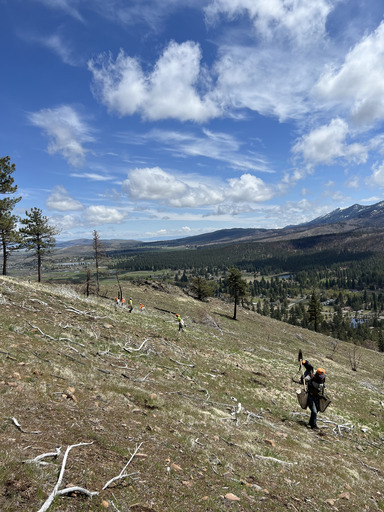The Hog Fire began on July 18, 2020 from an unknown source and was contained by Cal Fire on August 17, 2020. The wildfire burned 6,621 private acres and a little over 2,946 on federally-managed lands for a total of 9,567 acres. The Sheep Fire was a lightning-caused wildfire that burned 9,134 acres of federally-managed land in the Diamond Mountains and spread onto 19,023 acres of private land at the base of the mountains toward the city of Susanville, CA. The Sheep Fire began in the lightning siege on August 17, 2020 and spread across Plumas into Lassen County torching federal (Forest Service) and private land until September 4, 2020. Abundant standing, fire-killed trees will be removed to restore these timberlands as well as reduce future fire risk. Conifer seedlings will be planted in areas where dead/dying trees have been removed in order to restore these damaged timberlands.
Variable density tree planting of seedling plugs will occur within the project area based on slope, aspect, site class, and soil moisture to improve forest health and improved resilience of forests to climate change and other stressors, including pests, drought, and variability associated with climate change. Reforested areas will stabilize carbon loss from soil and will begin to sequester carbon more quickly than areas allowed to regenerate naturally. Forested areas will sequester carbon at greater rates than areas of shrubs or grassland. Planted areas will become more biodiverse over time than untreated areas and will provide habitat for forest-dwelling species. As soil becomes stabilized, additional species colonize in an environment more amenable to plant growth (more shade, cooler soil temperatures, retained surface soil moisture). Soil microbes, insects, birds, and mammal diversity will increase concomitantly with increased plant diversity. Trees absorb and store water preventing excess runoff of soil and nutrients into waterways.
Reforestation will also improve water infiltration into the soil and groundwater recharge. Tree roots will hold soil in place preventing erosion and landslides. Over time, organic matter content of the soil will increase improving fertility and carbon storage. The loss of critical surface vegetation has left previously-forested slopes extremely vulnerable to large-scale soil erosion and flooding during subsequent storm events. Planting trees where erosion risks are the greatest will protect homes, infrastructure and natural resources located downstream. Bare soils are prone to wind erosion. Reforestation will lessen air-borne dust from unvegetated burned areas. Preservation of forested lands. Replanting burned areas will lessen the likelihood of their conversion to other uses.


